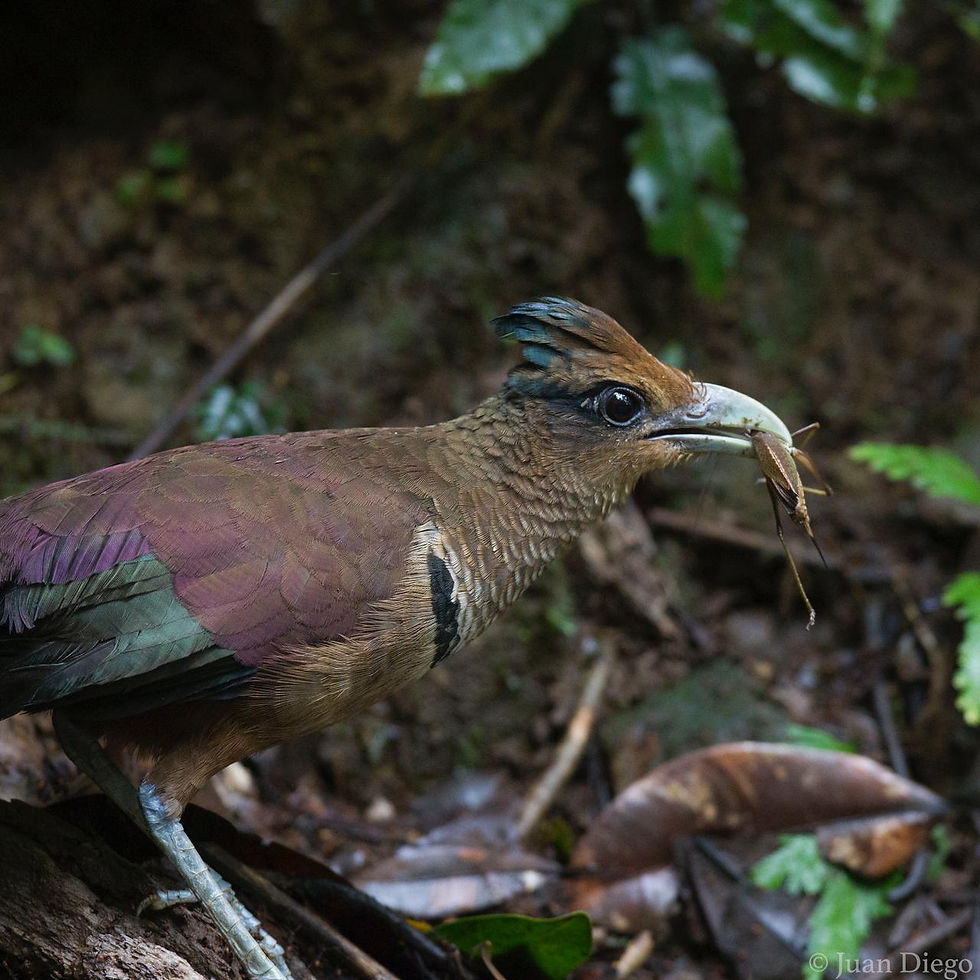More Endemic Birds for Costa Rica and Panama?
- information5950
- Sep 10, 2023
- 2 min read

At Lifer Tours, we love to see new birds in Costa Rica, Panama, and pretty much everywhere. We also love taking pictures of birds, especially species with limited ranges, like the Collared Redstart pictured above. These special birds are the ones known as "endemics" or "regional endemics"; the birds that only live in one country or a small geographical region.
As luck would have it, in Costa Rica, we have a pretty high number of endemic birds. While 5 or 6 species only occur within the borders of this beautiful tropical country, the number of bird species only shared between Costa Rica and Panama is much higher. Not just 30 or even 40 species, but more than 80 bird species! And if we include other birds only found in southern Central America and small areas in northern Colombia, the number goes up.
Even better, the list of regional endemic birds for Costa Rica and Panama is about to increase. But how? Aren't all of the birds discovered in these well-birded nations? Well, yes and no. Although, there probably aren't any totally undescribed and unseen species waiting to be discovered, we have cryptic bird species in Costa Rica still awaiting formal descriptions.
In fact, recent studies have revealed two such birds:
Slaty-backed Nightinagle-Thrush

This species lives in cloud forests from Costa Rica to the Andes. However, it occurs in several separate populations. A big systematic study found that several populations differed enough in plumage, DNA, and vocalizations to split them into several species. One of those likely species is restricted to Costa Rica and Panama. Proposed names for it are Talamanca Nightingale-Thrush and Black-backed Nightingale-Thrush.
Fortunately, this bird is pretty easy to see when birding Costa Rica, especially if you go birding with a good local guide.
Azure-hooded Jay
A similar situation happened with another beautiful cloud forest bird! Although the separate populations in Mexico and Central America look kind of similar, detailed studies showed that a few were quite different, and that the birds from Costa Rica and Panama were the most different ones of all. This means there's a very good chance this will also be eventually accepted as a valid species!
This "new" jay can also be readily seen at key sites but it's not as easy as other birds in Costa Rica. For this one, you'll probably need a local birding guide with a lot of experience.
Although these changes haven't been accepted on lists yet, given the good evidence, there's a pretty good chance we'll see these "new" birds on Costa Rica lists either this or the following year. These aren't the only likely new regional endemics either! There are still some other additional candidates including Sharpbill, Streak-chested Antpitta, and Black-headed Antthrush to name a few. To have an idea of what's in store, check out what Howell and Dyer (authors of a new Princeton new field guide for the birds of Costa Rica) mention about potential bird species splits for Costa Rica.
All of this is a good reminder to keep track of every bird you see in Costa Rica and Panama. It also means that whether you visit Costa Rica now, have already visited, or are planning a birding trip to Costa Rica soon, there are more species possible than you think!











Comments